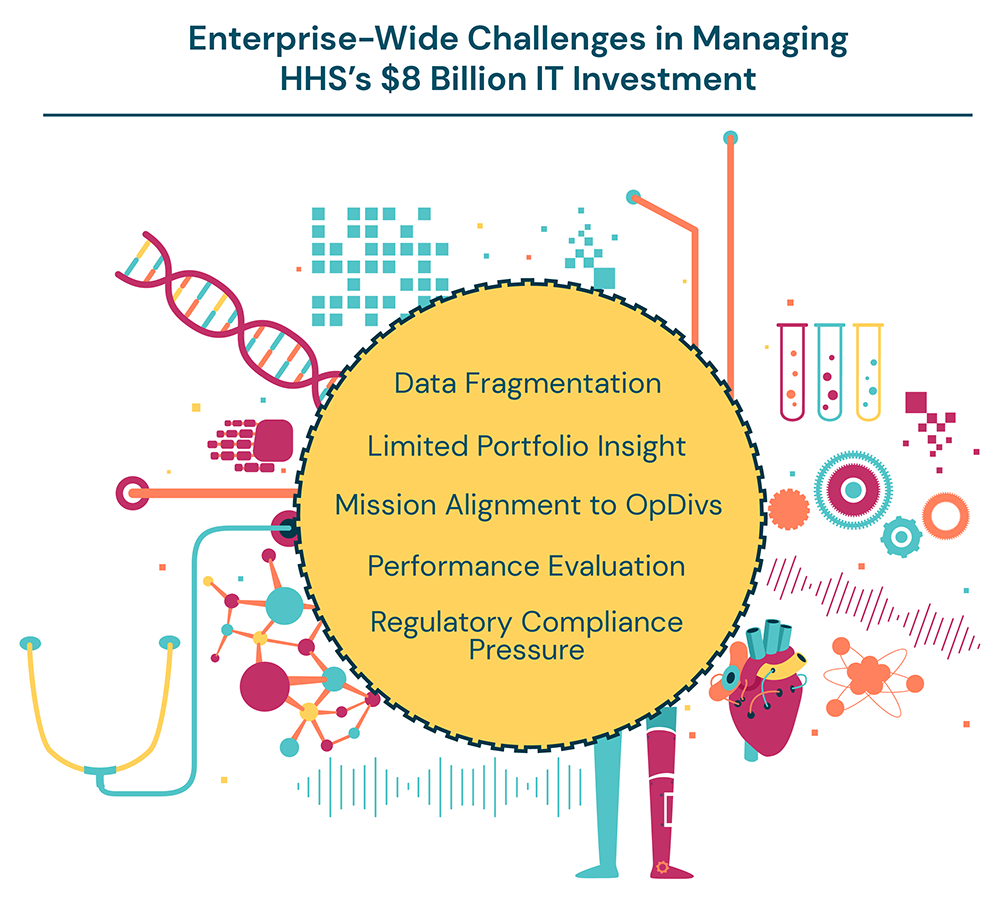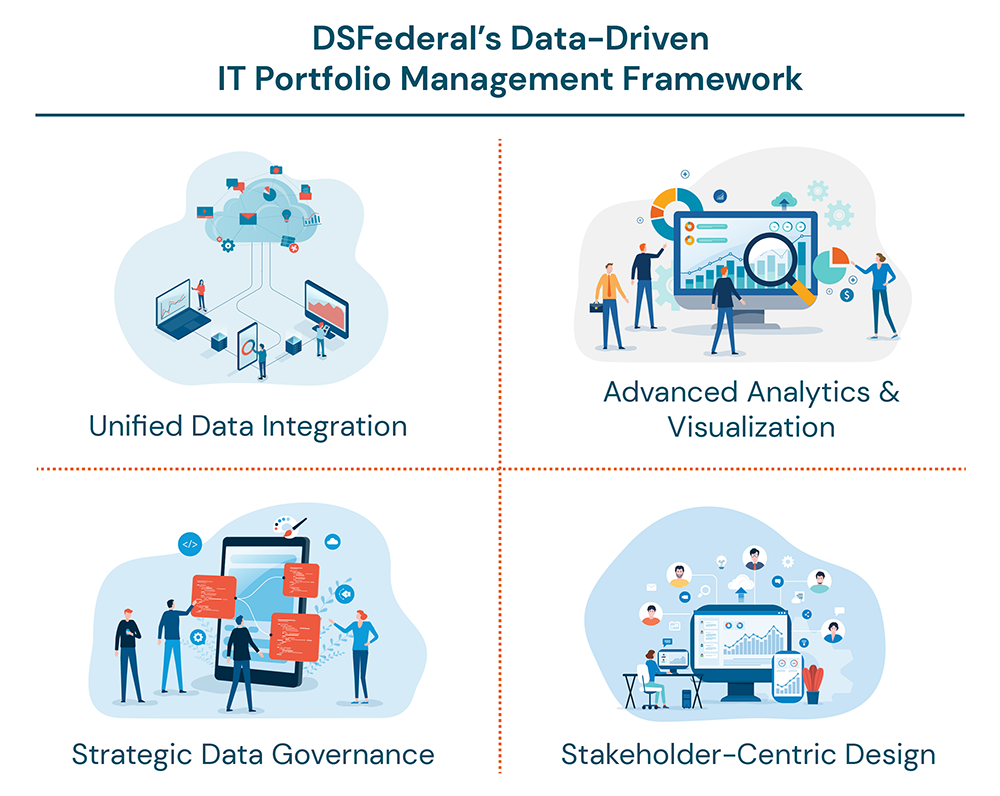

The U.S. Department of Health and Human Services (HHS) manages one of the largest and most complex federal IT portfolios, spanning multiple Operating Divisions (OpDivs) with diverse missions, budgets, and reporting requirements. To improve transparency, accountability, and performance outcomes, DSFederal partnered with the HHS Office of the Chief Information Officer (OCIO) to modernize its Capital Planning and Investment Control (CPIC) and IT Portfolio Management processes. The result was a data-driven decision framework supported by integrated analytics and visualization tools that transformed traditional compliance reporting into a strategic capability for investment management.
The Challenge:
Managing an IT portfolio exceeding $8 billion in annual spend posed several enterprise-level challenges for HHS:
- Data Fragmentation: Portfolio and investment data were dispersed across multiple systems (including General Services Administration system (GSA) Folio, ServiceNow, and others), complicating efforts to ensure data accuracy, consistency, and timeliness for Office of Management and Budget (OMB) submissions and internal reviews.
- Limited Portfolio Insight: Existing tools such as Folio provided compliance reporting but lacked dynamic visualization or performance tracking capabilities for investment oversight.
- Mission Alignment: Aligning IT investments with distinct missions and strategic priorities of multiple OpDivs required extensive coordination and stakeholder engagement.
- Performance Evaluation: Identifying underperforming projects was hindered by the absence of standardized dashboards.
- Regulatory Compliance Pressure: Frequent OMB policy updates and evolving Federal Information Technology Acquisition Reform Act (FITARA) requirements created a constant need to adapt reporting, processes, and documentation.
Our Approach:
Across the Federal Government, CPIC reporting traditionally emphasizes compliance and regulatory alignment. Building on HHS’s strong foundation in governance and portfolio oversight, DSFederal partnered with the HHS OCIO to enhance existing processes and expand their value through advanced analytics and integrated data management.
By designing and implementing a data-driven IT portfolio management framework focused on accessibility, accuracy, and analytical depth, the team enabled HHS to gain deeper visibility into investment performance and strategic outcomes. This modernization elevated CPIC activities into a strategic management discipline, supporting evidence-based decisions and continuous improvement across the IT investment lifecycle.
Key components included:
- Unified Data Integration: Developed secure APIs to consolidate investment and operational data from distributed systems including GSA Folio, ServiceNow, and SharePoint into a single, secure data environment.
- Advanced Analytics & Visualization: Designed and deployed a suite of Power BI dashboards providing the HHS IT Community and IT portfolio managers with multi-dimensional, real-time visibility into IT performance metrics, spending, and investment alignment.
- Strategic Data Governance: Implemented standardized performance metrics and taxonomy aligned with Technology Business Management (TBM) principles to support cost transparency and benchmarking.
- Stakeholder-Centric Design: Engaged HHS Operational Divisions through workgroups to collaboratively design and test dashboards, ensuring they addressed the varied analytic and reporting requirements of stakeholders.

The Outcome:
Our team developed interactive Power BI dashboards integrated with GSA Folio data that provided HHS OCIO and the HHS IT community with dynamic, multi-dimensional views of the department’s IT investments. These dashboards included internal HHS versions of the IT dashboard and FITARA Scorecard, creating a unified platform for investment performance monitoring. They provided major OpDivs such as CMS, FDA, and NIH with individualized performance insights, empowering each to track progress, identify opportunities for improvement, and advance IT management outcomes beyond what is visible on the agency’s public scorecard.
The dashboards became integral tools to HHS’ data-driven decision framework and were actively used in the department’s annual IT portfolio reviews, as well as enterprise IT governance board meetings. Dashboards equipped leadership with timely, data-driven insights that enabled the evaluation of investment performance, identification of emerging trends, and informed strategic funding decisions. Routine dashboard updates enabled HHS stakeholders to monitor portfolio performance throughout the year, ensuring decisions are based on the most accurate and current information available.